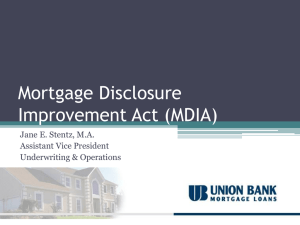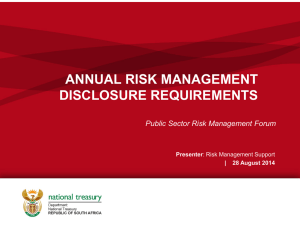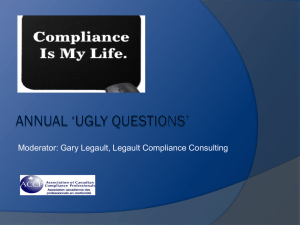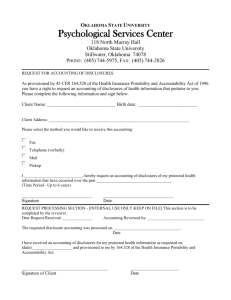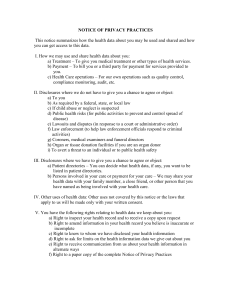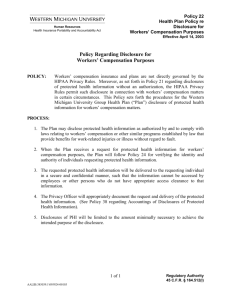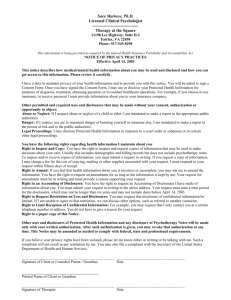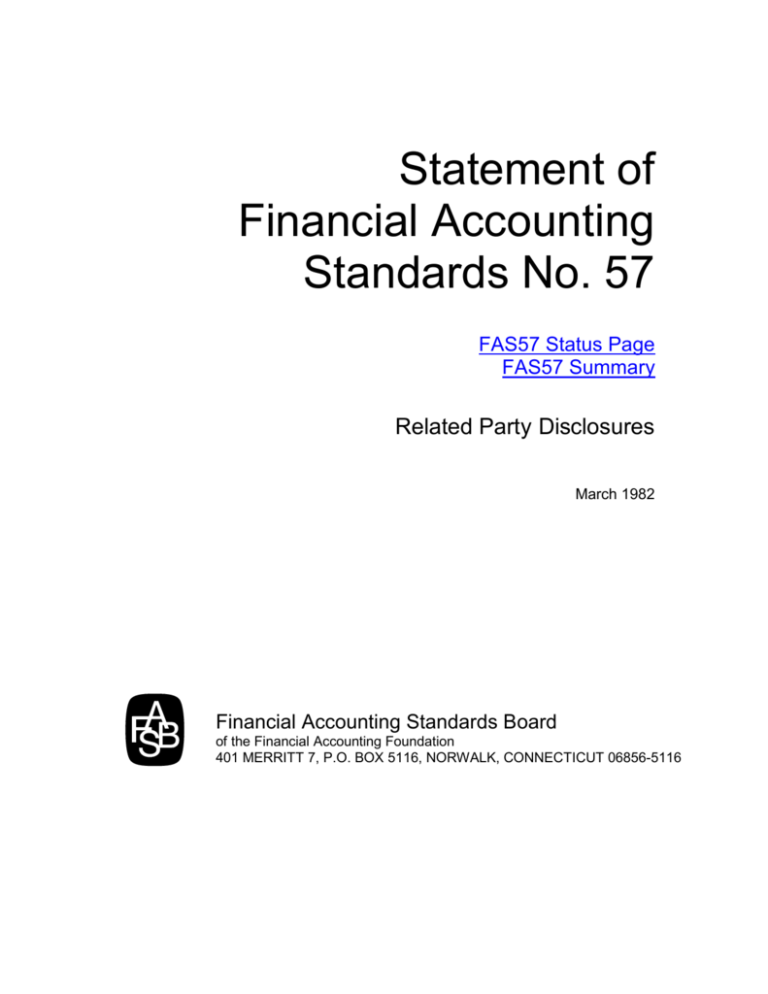
Statement of
Financial Accounting
Standards No. 57
FAS57 Status Page
FAS57 Summary
Related Party Disclosures
March 1982
Financial Accounting Standards Board
of the Financial Accounting Foundation
401 MERRITT 7, P.O. BOX 5116, NORWALK, CONNECTICUT 06856-5116
Copyright © 1982 by Financial Accounting Standards Board. All rights reserved. No
part of this publication may be reproduced, stored in a retrieval system, or transmitted, in
any form or by any means, electronic, mechanical, photocopying, recording, or
otherwise, without the prior written permission of the Financial Accounting Standards
Board.
Page 2
Statement of Financial Accounting Standards No. 57
Related Party Disclosures
March 1982
CONTENTS
Paragraph
Numbers
Introduction ...................................................................................................................... 1
Standards of Financial Accounting and Reporting:
Disclosures ............................................................................................................. 2–4
Effective Date and Transition..................................................................................... 5
Appendix A: Background Information and Basis for
Conclusions .......................................................................................................... 6–23
Appendix B: Glossary ................................................................................................... 24
Page 3
FAS 57: Related Party Disclosures
FAS 57 Summary
This Statement establishes requirements for related party disclosures. The requirements
of this Statement are generally consistent with those in Statement on Auditing Standards No. 6,
Related Party Transactions, issued by the Auditing Standards Executive Committee of the
American Institute of Certified Public Accountants.
INTRODUCTION
1.
The FASB has been asked to provide guidance on disclosures of transactions between
related parties.1 Examples of related party transactions include transactions between (a) a
parent company and its subsidiaries; (b) subsidiaries of a common parent; (c) an enterprise and
trusts for the benefit of employees, such as pension and profit-sharing trusts that are managed by
or under the trusteeship of the enterprise's management; (d) an enterprise and its principal
owners, management, or members of their immediate families; and (e) affiliates. Transactions
between related parties commonly occur in the normal course of business. Some examples of
common types of transactions with related parties are: sales, purchases, and transfers of realty
and personal property; services received or furnished, for example, accounting, management,
engineering, and legal services; use of property and equipment by lease or otherwise; borrowings
and lendings; guarantees; maintenance of bank balances as compensating balances for the benefit
of another; intercompany billings based on allocations of common costs; and filings of
consolidated tax returns. Transactions between related parties are considered to be related party
transactions even though they may not be given accounting recognition. For example, an
enterprise may receive services from a related party without charge and not record receipt of the
services.
Copyright © 1982, Financial Accounting Standards Board
Not for redistribution
Page 4
STANDARDS OF FINANCIAL ACCOUNTING AND REPORTING
Disclosures
2.
Financial statements shall include disclosures of material related party transactions, other
than compensation arrangements, expense allowances, and other similar items in the ordinary
course of business. However, disclosure of transactions that are eliminated in the preparation of
consolidated or combined financial statements is not required in those statements.2 The
disclosures shall include:3
a. The nature of the relationship(s) involved
b. A description of the transactions, including transactions to which no amounts or nominal
amounts were ascribed, for each of the periods for which income statements are presented,
and such other information deemed necessary to an understanding of the effects of the
transactions on the financial statements
c. The dollar amounts of transactions for each of the periods for which income statements are
presented and the effects of any change in the method of establishing the terms from that
used in the preceding period
d. Amounts due from or to related parties as of the date of each balance sheet presented and, if
not otherwise apparent, the terms and manner of settlement
3.
Transactions involving related parties cannot be presumed to be carried out on an
arm's-length basis, as the requisite conditions of competitive, free-market dealings may not exist.
Representations about transactions with related parties, if made, shall not imply that the related
party transactions were consummated on terms equivalent to those that prevail in arm's-length
transactions unless such representations can be substantiated.
4.
If the reporting enterprise and one or more other enterprises are under common ownership
or management control and the existence of that control could result in operating results or
financial position of the reporting enterprise significantly different from those that would have
been obtained if the enterprises were autonomous, the nature of the control relationship shall be
disclosed even though there are no transactions between the enterprises.
Effective Date and Transition
5.
This statement shall be effective for financial statements for fiscal years ending after June
15, 1982. Earlier application is encouraged but is not required.
Copyright © 1982, Financial Accounting Standards Board
Not for redistribution
Page 5
The provisions of this Statement need
not be applied to immaterial items.
This Statement was adopted by the unanimous vote of the seven members of the Financial
Accounting Standards Board:
Donald J. Kirk, Chairman
Frank E. Block
John W. March
Robert A. Morgan
David Mosso
Robert T. Sprouse
Ralph E. Walters
Appendix A: BACKGROUND INFORMATION AND BASIS FOR
CONCLUSIONS
6.
This appendix discusses the factors that the Board considered significant in reaching the
conclusions in this Statement. Individual Board members gave greater weight to some factors
than to others.
7.
AICPA Statement on Auditing Standards No. 6, Related Party Transactions (SAS 6), and
interpretations of SAS 6 provide guidance on related party financial statement disclosures.
However, authoritative auditing pronouncements are intended to direct the activities of auditors,
not of reporting enterprises.
8.
As part of Accounting Series Release No. 280, General Revisions of Regulation S-X, the
Securities and Exchange Commission integrated the disclosure requirements of SAS 6 pertaining
to related party transactions into Regulation S-X. Regulation S-X, however, applies only to
enterprises subject to the filing requirements of the SEC.
9.
Because guidance for related party disclosures was not included in the authoritative
literature on generally accepted accounting principles, the Accounting Standards Division of the
AICPA asked the FASB to consider providing such guidance in a Statement of Financial
Accounting Standards.
10. As discussed in paragraphs 12-18, the Board believes that it is appropriate to establish
standards that apply to all enterprises for disclosure of information about related party
transactions and certain control relationships. The Board has not undertaken a comprehensive
reconsideration of the accounting and reporting issues discussed in SAS 6 and related
Copyright © 1982, Financial Accounting Standards Board
Not for redistribution
Page 6
interpretations thereof. The related party disclosure requirements contained in those documents
have been extracted without significant change, except that this Statement does not address the
issues pertaining to economic dependency. Other FASB projects may address issues related to
those in this Statement, and the Board may reconsider the standards in this Statement when those
projects are completed.
11. An Exposure Draft of a proposed Statement, Related Party Disclosures, was issued on
November 6, 1981. The Board received 66 comment letters in response to that Exposure Draft.
Certain of the comments received and the Board's consideration of them are discussed in
paragraphs 19-22 of this appendix.
Usefulness of Related Party Disclosures
12. FASB Concepts Statement No. 2, Qualitative Characteristics of Accounting Information,
examines the characteristics of accounting information that make it useful. That Statement
concludes that for accounting information to be useful, it should be relevant (meaning that it has
predictive or feedback value) and reliable (meaning that it has representational faithfulness,
verifiability, and neutrality). That Statement further concludes that information about an
enterprise increases in usefulness if it can be compared with similar information about other
enterprises and with similar information about the same enterprise for some other period or point
in time.
13. Accounting information is relevant if it is "capable of making a difference in a decision by
helping users to form predictions about the outcomes of past, present, and future events or to
confirm or correct expectations."4 Relationships between parties may enable one of the parties to
exercise a degree of influence over the other such that the influenced party may be favored or
caused to subordinate its independent interests. Related party transactions may be controlled
entirely by one of the parties so that those transactions may be affected significantly by
considerations other than those in arm's-length transactions with unrelated parties. Some related
party transactions may be the result of the related party relationship and without the relationship
may not have occurred or may have occurred on different terms. For example, the terms under
which a subsidiary leases equipment to another subsidiary of a common parent may be imposed
by the common parent and might vary significantly from one lease to another because of
circumstances entirely unrelated to market prices for similar leases.
14. Sometimes two or more enterprises are under common ownership or management control
but do not transact business with each other. The common control, however, may result in
operating results or financial position significantly different from that which would have been
obtained if the enterprises were autonomous. For example, two or more enterprises in the same
line of business may be controlled by a party that has the ability to increase or decrease the
volume of business done by each. Disclosure of information about certain control relationships
and transactions with related parties helps users of financial statements form predictions and
analyze the extent to which those statements may have been affected by that relationship.
Copyright © 1982, Financial Accounting Standards Board
Not for redistribution
Page 7
15. Reliability of financial information involves "assurance that accounting measures
represent what they purport to represent." 5 Without disclosure to the contrary, there is a general
presumption that transactions reflected in financial statements have been consummated on an
arm's-length basis between independent parties. However, that presumption is not justified when
related party transactions exist because the requisite conditions of competitive, free-market
dealings may not exist. Because it is possible for related party transactions to be arranged to
obtain certain results desired by the related parties, the resulting accounting measures may not
represent what they usually would be expected to represent. Reduced representational
faithfulness and verifiability of amounts used to measure transactions with related parties
weaken the reliability of those amounts. That weakness cannot always be cured by reference to
market measures because in many cases there may be no arm's-length market in the goods or
services that are the subject of the related party transactions.
16. The Board believes that an enterprise's financial statements may not be complete without
additional explanations of and information about related party transactions and thus may not be
reliable. Completeness implies that "... nothing material is left out of the information that may
be necessary to insure that it validly represents the underlying events and conditions." 6
17. The Board also believes that relevant information is omitted if disclosures about
significant related party transactions required by this Statement are not made. "Completeness of
information also affects its relevance. Relevance of information is adversely affected if a
relevant piece of information is omitted, even if the omission does not falsify what is shown." 7
18. Information about transactions with related parties is useful to users of financial
statements in attempting to compare an enterprise's results of operations and financial position
with those of prior periods and with those of other enterprises. It helps them to detect and
explain possible differences. Therefore, information about transactions with related parties that
would make a difference in decision making should be disclosed so that users of the financial
statements can evaluate their significance.
Consideration of Comments on Exposure Draft
19. Some respondents were troubled by the proposal in the Exposure Draft to require
disclosure of only those transactions "that are necessary for users to understand the financial
statements." They generally expressed the view that it would be difficult to apply such a
criterion and that it was unclear how that criterion interacted with materiality judgments. In
addition, some respondents also interpreted that language combined with the Exposure Draft's
omission of the specific exclusion provided in SAS 6 for disclosure of compensation
arrangements, expense allowances, and other similar items in the ordinary course of business as
a requirement that such items be disclosed. The Board does not intend to imply that disclosure
of related party transactions and certain control relationships is a separate objective of financial
reporting, nor does the Board intend to introduce a new concept of materiality. Rather,
Copyright © 1982, Financial Accounting Standards Board
Not for redistribution
Page 8
disclosure of related party transactions and certain control relationships is required solely for the
purpose of enhancing the understanding of the financial statements and the fact that such matters
have, or could have, an effect on the financial statements. Disclosure of compensation
arrangements, expense allowances, and other similar items in the ordinary course of business is
not necessary for a user to understand the financial statements. The standard has been revised
accordingly.
20. The Exposure Draft would have prohibited representations to the effect that related party
transactions were consummated on an arm's-length basis. While recognizing the difficulty in
many situations of determining the terms on which a transaction might have occurred if the
parties were unrelated, many respondents pointed out that certain related party transactions occur
on terms available to unrelated parties or on terms established by regulatory agencies. They
believe that representations as to the terms of a related party transaction should not be prohibited
if they can be substantiated. The Board agreed, and the requirement (paragraph 3) has been
modified accordingly.
21. SAS 6 and interpretations thereof call for disclosure of the nature of common control
relationships if the controlling party has the ability to affect the reporting enterprise in a manner
that could lead to significantly different operating results or financial position than if the
enterprises were autonomous. The Exposure Draft would have gone beyond those requirements
to require disclosure of all control relationships. Some respondents expressed doubt about the
usefulness of some of the disclosures that would result. They indicated that the requirement
would be burdensome particularly for closely held enterprises that might have numerous
relationships with owners and their families, lenders, and possibly others that might be deemed
to be "control." The Board agreed that requiring disclosure of all control relationships might be
of limited usefulness. Accordingly, the requirement (paragraph 4) was revised to conform more
closely to that discussed in SAS 6.
22. Several respondents asked the FASB to provide additional guidance on disclosures about
economic dependency but did not provide information to define the issues involved, nor did they
provide evidence as to why additional guidance is needed. Therefore, the Board concluded that
issuance of this Statement should not be delayed to consider that issue.
23. The Board has concluded that it can reach an informed decision on the basis of existing
information without a public hearing and that the effective date and transition specified in
paragraph 5 are advisable in the circumstances.
Copyright © 1982, Financial Accounting Standards Board
Not for redistribution
Page 9
Appendix B: GLOSSARY
24.
For purposes of this Statement, certain terms are defined as follows:
a.
Affiliate. A party that, directly or indirectly through one or more intermediaries, controls, is
controlled by, or is under common control with an enterprise.
b.
Control. The possession, direct or indirect, of the power to direct or cause the direction of
the management and policies of an enterprise through ownership, by contract, or otherwise.
c.
Immediate family. Family members whom a principal owner or a member of management
might control or influence or by whom they might be controlled or influenced because of the
family relationship.
d.
Management. Persons who are responsible for achieving the objectives of the enterprise
and who have the authority to establish policies and make decisions by which those
objectives are to be pursued. Management normally includes members of the board of
directors, the chief executive officer, chief operating officer, vice presidents in charge of
principal business functions (such as sales, administration, or finance), and other persons
who perform similar policymaking functions. Persons without formal titles also may be
members of management.
e.
Principal owners. Owners of record or known beneficial owners of more than 10 percent
of the voting interests of the enterprise.
f.
Related parties. Affiliates of the enterprise; entities for which investments are accounted
for by the equity method by the enterprise; trusts for the benefit of employees, such as
pension and profit-sharing trusts that are managed by or under the trusteeship of
management; principal owners of the enterprise; its management; members of the immediate
families of principal owners of the enterprise and its management; and other parties with
which the enterprise may deal if one party controls or can significantly influence the
management or operating policies of the other to an extent that one of the transacting parties
might be prevented from fully pursuing its own separate interests. Another party also is a
related party if it can significantly influence the management or operating policies of the
transacting parties or if it has an ownership interest in one of the transacting parties and can
significantly influence the other to an extent that one or more of the transacting parties
might be prevented from fully pursuing its own separate interests.
Copyright © 1982, Financial Accounting Standards Board
Not for redistribution
Page 10
Footnotes
FAS57, Footnote 1--Terms defined in the glossary (Appendix B) are in boldface type the first
time they appear in this Statement.
FAS57, Footnote 2--The requirements of this Statement are applicable to separate financial
statements of each or combined groups of each of the following: a parent company, a subsidiary,
a corporate joint venture, or a 50-percent-or-less owned investee. However, it is not necessary to
duplicate disclosures in a set of separate financial statements that is presented in the financial
report of another enterprise (the primary reporting enterprise) if those separate financial
statements also are consolidated or combined in a complete set of financial statements and both
sets of financial statements are presented in the same financial report.
FAS57, Footnote 3--In some cases, aggregation of similar transactions by type of related party
may be appropriate. Sometimes, the effect of the relationship between the parties may be so
pervasive that disclosure of the relationship alone will be sufficient. If necessary to the
understanding of the relationship, the name of the related party should be disclosed.
FAS57, Appendix A, Footnote 4--Concepts Statement 2, paragraph 47.
FAS57, Appendix A, Footnote 5--Ibid., paragraph 81.
FAS57, Appendix A, Footnote 6--Ibid., paragraph 79.
FAS57, Appendix A, Footnote 7--Ibid., paragraph 80.
Copyright © 1982, Financial Accounting Standards Board
Not for redistribution
Page 11

